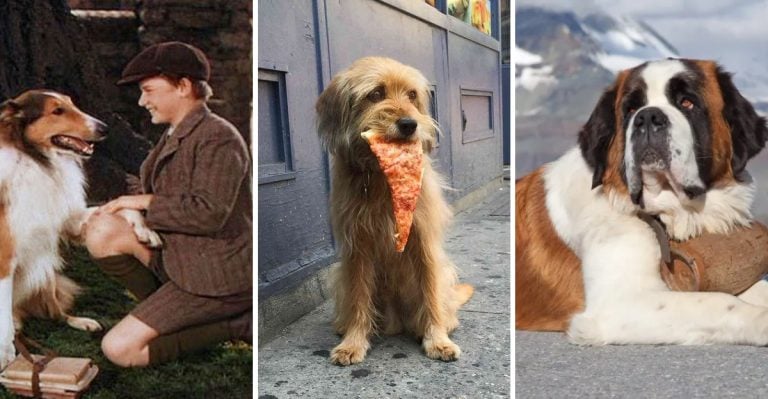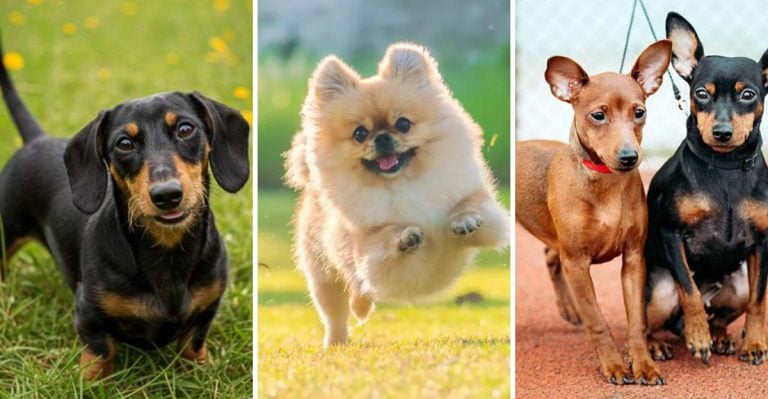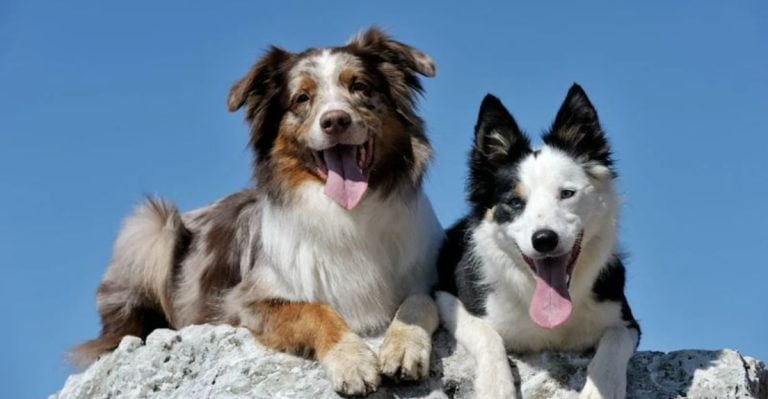12 Chihuahua Facts That’ll Completely Change How You See the Breed
When most people picture a Chihuahua, they usually think of a tiny, purse-sized pup with a big attitude and an even bigger bark. Thanks to their size and pop culture cameos, these little dogs have built a reputation for being fashion accessories or sassy lap pets. But beneath those big eyes and pint-sized frames lies a fascinating history and a set of surprising traits that most people never hear about.
Chihuahuas are more than just the smallest dog breed—they’re one of the most misunderstood. While they certainly know how to command attention, these dogs also boast ancient origins, unexpected talents, and unique quirks that set them apart from any other canine. Whether you’re a lifelong dog lover or just curious about what makes this breed tick, you’ll soon discover that there’s so much more to Chihuahuas than meets the eye.
Did you know some Chihuahuas are born with extra toes? Or that one even made it into a police search-and-rescue unit in Japan? From their mysterious Aztec roots to their impressively long lifespans, these feisty little dogs carry a whole lot of history—and surprises—on their tiny shoulders. And if you thought their bark was their biggest claim to fame, think again.
We’ve rounded up 12 of the most surprising, delightful, and downright incredible facts about Chihuahuas that’ll make you see this pocket-sized pup in a totally different light. Whether you already adore the breed or never paid them much attention, prepare to be charmed—and maybe even a little amazed—by what you’re about to learn. So grab your favorite snack, settle in, and get ready to rethink everything you thought you knew about the mighty Chihuahua.
1. Ancient Mexican Royalty
Chihuahuas boast a noble heritage dating back over 1,000 years. These tiny dogs descend from the Techichi, companion animals sacred to the ancient Toltec civilization of Mexico.
Archaeological evidence shows these ancestors were larger than modern Chihuahuas and held significant spiritual importance. The Techichi were believed to guide souls to the underworld after death.
When Aztecs conquered the Toltecs, they refined the breeding of these dogs, gradually developing the smaller size we recognize today. This royal lineage explains why these little dogs often act like they’re in charge!
2. The Meaning Behind the Name
Few dog owners realize their Chihuahua’s name carries geographic significance. The term likely originates from the Nahuatl word “Xicuahua,” meaning “between two waters,” describing the Mexican state where these dogs were abundantly found.
Spanish conquistadors discovered these diminutive dogs in Chihuahua, Mexico’s largest state, during their exploration of the region in the 16th century. The state itself sits between two major rivers—a literal interpretation of the name’s meaning.
Local folklore suggests alternative interpretations, including connections to ancient desert winds or dry, sandy places where the dogs thrived.
3. Brain Power in a Tiny Package
Beneath that apple-domed head lies an impressive brain! Chihuahuas possess the largest brain-to-body size ratio of any dog breed, making them surprisingly intelligent companions.
This proportionally massive brain explains their quick learning abilities and sometimes stubborn nature—they’re smart enough to know what they want! Scientists studying canine cognition have found these tiny dogs can solve puzzles and memorize commands as effectively as much larger breeds.
Their exceptional brainpower demands mental stimulation through training and enrichment activities. Without proper challenges, these clever canines often develop creative—and sometimes destructive—ways to entertain themselves.
4. Extra Toes: The Polydactyl Surprise
While most dogs have four toes on each back foot and five on the front, some Chihuahuas break this rule. A genetic condition called polydactyly occasionally appears in the breed, giving them bonus digits!
These extra toes typically form on the inner side of the paw, complete with claws and sometimes partial pad development. Unlike other genetic anomalies, polydactyly rarely causes health problems for these tiny pups.
The condition stems from a dominant gene mutation that affects limb development in the embryonic stage. Breeders don’t typically select for this trait, making polydactyl Chihuahuas relatively uncommon treasures among Chi enthusiasts.
5. Breathing Healers of the Past
Throughout the 19th century, Chihuahuas were prescribed as living, breathing treatments for asthma sufferers. Folk medicine practitioners believed these tiny dogs could absorb respiratory ailments from their human companions.
Families would place Chihuahuas on the chests of asthmatic children, thinking the dog’s warmth and supposed healing abilities would draw out the illness. While medically unfounded, this practice helped cement the breed’s reputation as attentive, therapeutic companions.
Modern science explains the real benefit: the calming presence of a loving pet can reduce stress and anxiety, potentially easing asthma symptoms indirectly. This historical misconception highlights our ancestors’ recognition of the powerful human-animal bond.
6. A Tale of Two Coats
Contrary to popular belief, Chihuahuas aren’t just short-haired dogs. The American Kennel Club officially recognizes two distinct coat varieties: Smooth Coat and Long Coat Chihuahuas.
Smooth Coats sport glossy, close-fitting fur that requires minimal grooming but offers little protection from cold weather. Their longer-haired cousins flaunt feathery fur around their ears, legs, and tail, creating an elegant appearance reminiscent of tiny spaniels.
Fascinatingly, both coat types can appear in the same litter if both parents carry the recessive long-hair gene. Despite their different appearances, both varieties share identical breed standards in every other physical aspect.
7. Head Shapes That Define Them
Look closely at Chihuahuas and you’ll notice two distinct head shapes dividing the breed. “Apple heads” feature the classic domed skull with a 90-degree angle where the muzzle meets the forehead—the only type accepted in show rings.
“Deer heads,” with their longer muzzles and more gradual forehead slopes, resemble their namesake animal. While disqualified from conformation events, many veterinarians believe deer-headed Chihuahuas suffer fewer breathing difficulties and dental problems.
The head shape affects more than appearance—it influences everything from birthing ease (apple heads often require C-sections) to temperature regulation. This structural diversity showcases the breed’s fascinating evolutionary adaptations.
8. Fearful Without Friendship
Behind that tough-dog attitude often lurks a surprisingly anxious soul. Chihuahuas rank among the breeds most prone to developing fear-based behaviors and phobias without proper early socialization.
Their natural wariness stems from their small size—a survival adaptation that helped ancestral Chihuahuas avoid predators. Without positive exposure to different people, animals, and environments during their critical development window (3-14 weeks), this caution can escalate into problematic fear responses.
Responsible Chihuahua owners combat this tendency through gentle exposure therapy, carrying their pups to new locations, and creating positive associations with potentially scary stimuli. Well-socialized Chihuahuas transform from trembling shadows into confident companions.
9. Momo: The Tiny Hero Dog
Meet Momo, the seven-pound wonder who shattered stereotypes about small dogs’ capabilities. This remarkable Chihuahua became Japan’s first certified search-and-rescue dog under 12 pounds, specializing in finding survivors in disaster zones.
Momo’s diminutive size proved advantageous for navigating tight spaces in collapsed buildings where larger rescue dogs couldn’t fit. Her handler, Takako Shimizu, recognized this potential after witnessing the aftermath of devastating earthquakes.
Through rigorous training that tested her scent detection abilities and physical endurance, Momo proved that heroism comes in all sizes. Her certification inspired rescue programs worldwide to reconsider size requirements and focus instead on individual dogs’ natural abilities.
10. Baseball’s Tiniest Mascots
Baseball fans in El Paso, Texas rally behind an unlikely symbol of ferocity—the Chihuahua! The El Paso Chihuahuas, a Triple-A affiliate of the San Diego Padres, embrace this pint-sized powerhouse as their official mascot and team name.
Chosen in 2013 through a community naming contest, the team’s identity celebrates both the breed’s regional significance and its famously outsized attitude. Their stadium features “Bark Park” sections where fans can bring their own dogs to games.
The team’s beloved costumed mascot, Chico, entertains crowds with his oversized head and tiny body proportions. This sporty connection has boosted the breed’s popularity while highlighting the spirited personality that makes Chihuahuas such beloved companions.
11. The Persistent Soft Spot
Gently touch a Chihuahua puppy’s head and you might feel something surprising—a soft, pulsating spot called a molera. This opening in the skull, similar to a human baby’s fontanel, appears in nearly all Chihuahua puppies at birth.
While most dog breeds’ skull plates fuse completely within weeks, many Chihuahuas maintain their molera into adulthood—a unique trait once mistakenly considered a breed defect. Modern veterinary science recognizes this as a normal characteristic related to their apple-shaped heads.
The molera requires careful handling but rarely causes health problems. This distinctive feature connects Chihuahuas to their ancient ancestors and serves as a reminder of their specialized breeding history.
12. Living Decades, Not Just Years
Small but mighty, Chihuahuas boast extraordinary lifespans that put larger breeds to shame. While the average dog lives 10-13 years, these pocket-sized companions frequently celebrate their 15th, 18th, and sometimes even 20th birthdays!
Genetics plays a significant role in this longevity—smaller mammals typically live longer relative to their body size. The oldest documented Chihuahua, a Texas dog named Megabyte, reached the remarkable age of 20 years and 265 days.
Their extended lifespan means Chihuahua parents enjoy decades of companionship but must plan for senior care that can last seven years or more. This impressive durability makes them ideal pets for those seeking long-term furry friendship.


















